In today’s colloquial parlance, the phrase “salt mine” conjures up unpleasant or even grueling work. “Back to the salt mines!” goes the phrase as one returns to work after a break. So you can imagine my puzzled reaction to see the Turda Salt Mine near the top of our Romanian travel itinerary.
But nothing prepared me for the spectacle awaiting us as we descended the steps of the salt-lined tunneled staircase into the mine’s depths. The mine contains an amusement park 400 feet underground!
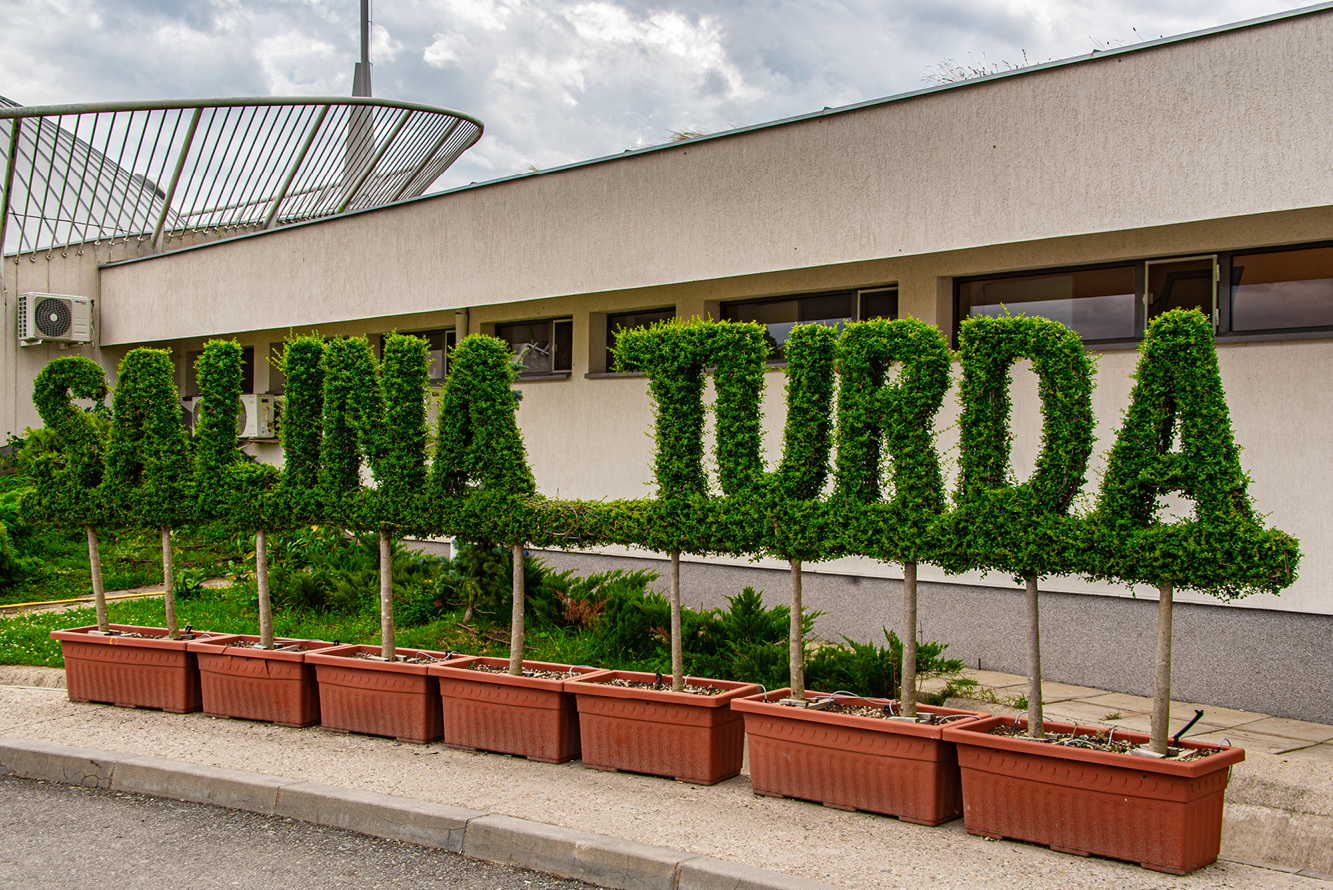
Why Romania and its salt mine?
“Why did he choose Romania as a travel destination?” you might wonder. Ever since watching scary Dracula movies as a kid, the idea of visiting Romania’s Transylvania fascinated me. Spooky castles with vampires, mist-shrouded mountains hiding ominous secrets, a land of quaint rural farm communities with villagers wearing traditional garb, living their lives “the old way” ––all in the imagination of a child craving adventure. Although my understanding of the country and the world matured as I grew up, the desire to visit Romania remained.
A few years back, after researching and vetting several tour companies on the web, I called Andrei Nicolau at Compass Travel Romania in Bucharest. He arranged a 10-day trip to the country’s far reaches, and, at his suggestion, four days traveling in neighboring Bulgaria.
After a three-night stay in architecturally-rich capital city Bucharest, once called “the Paris of the East,” our knowledgeable Romanian guide Nic Zavada picked us up at our hotel and guided us for the next eight days to the country’s charming cities and towns; through the farmlands of rural Maramuras and its communities, whose residents still practice many “old ways;” to the magical, medieval Byzantine painted churches of Bucovina; ; and to regal (not scary at all) castles, including Dracula’s Castle. (Truth be told, he stayed there only a few nights on his way to somewhere else.)
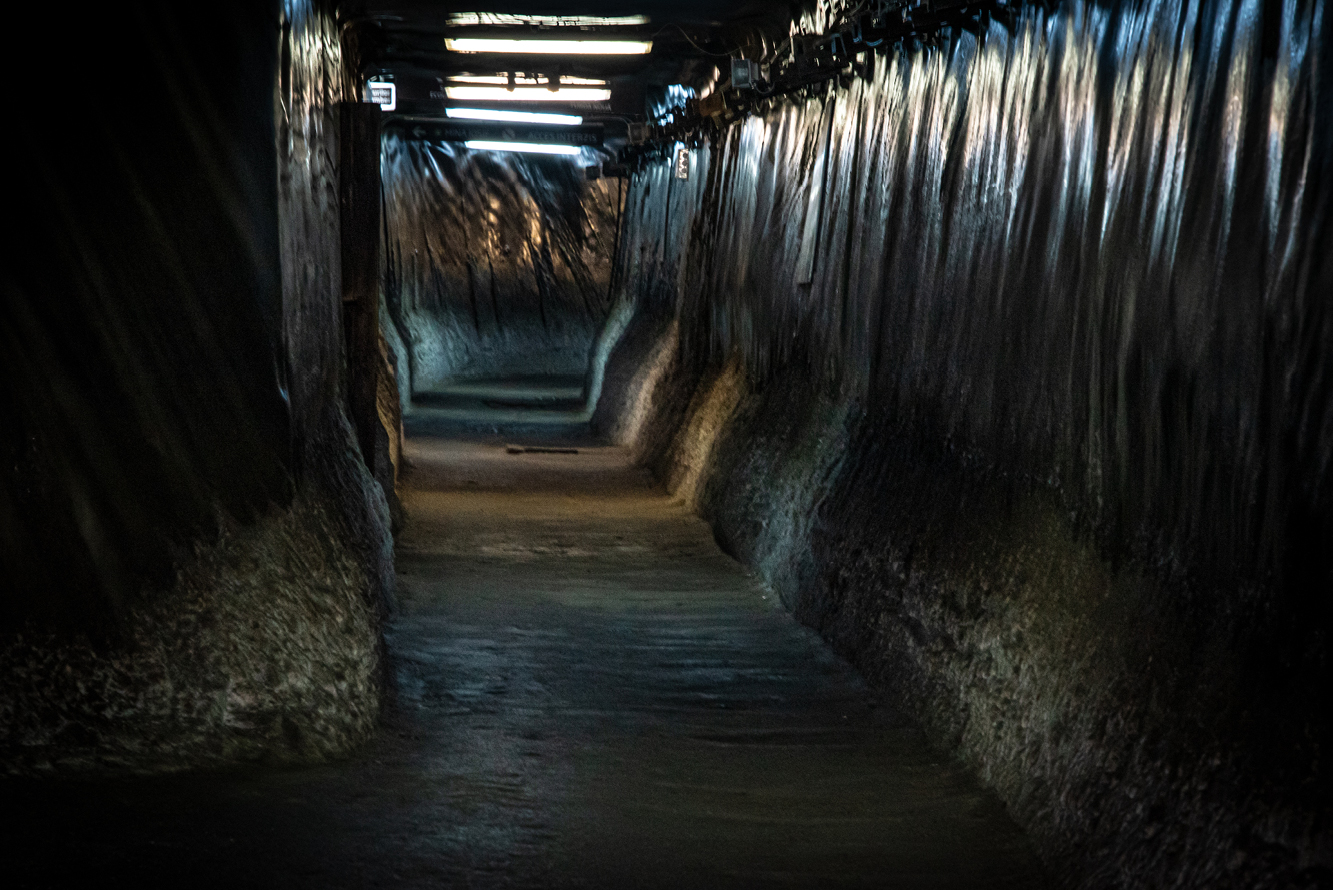
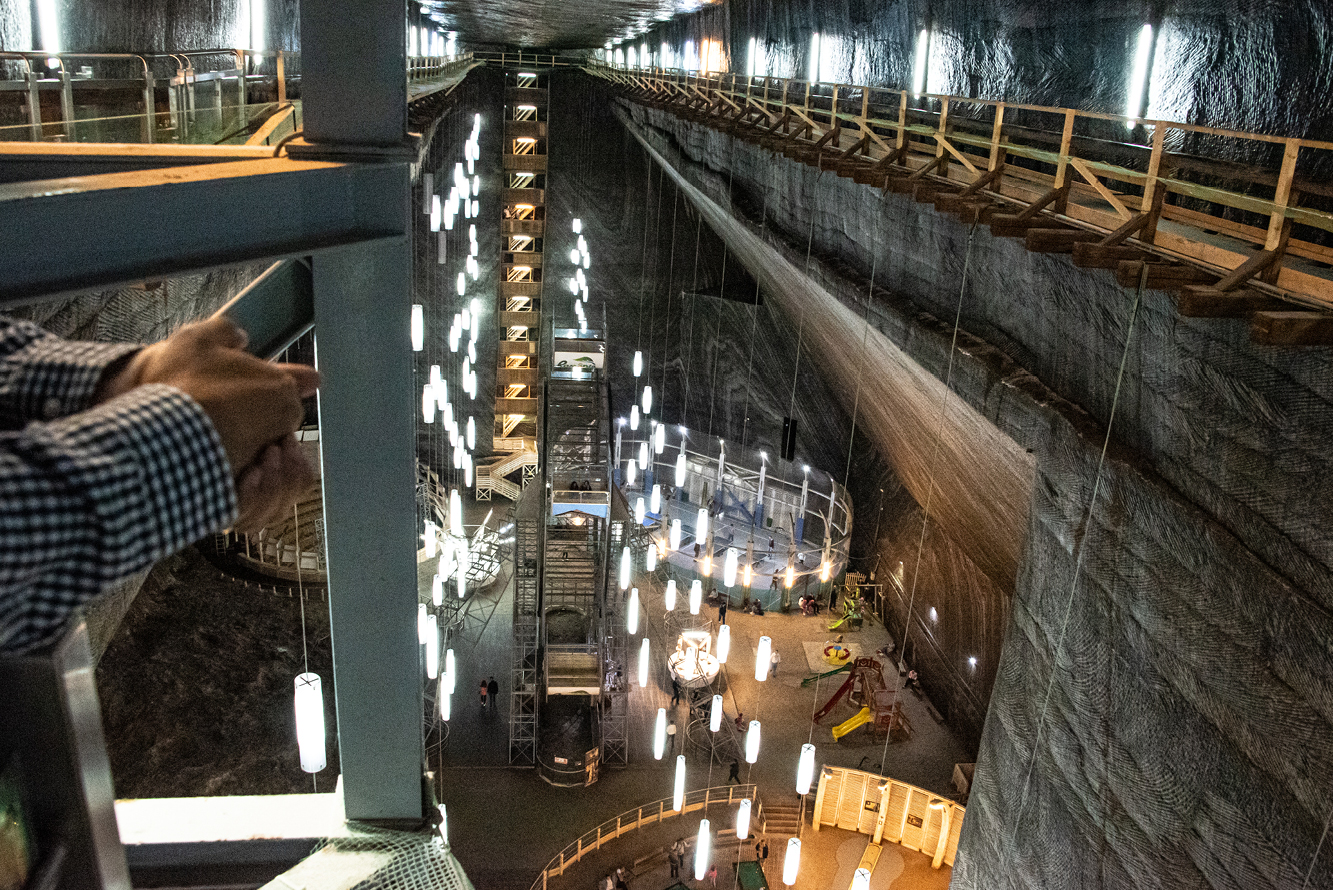
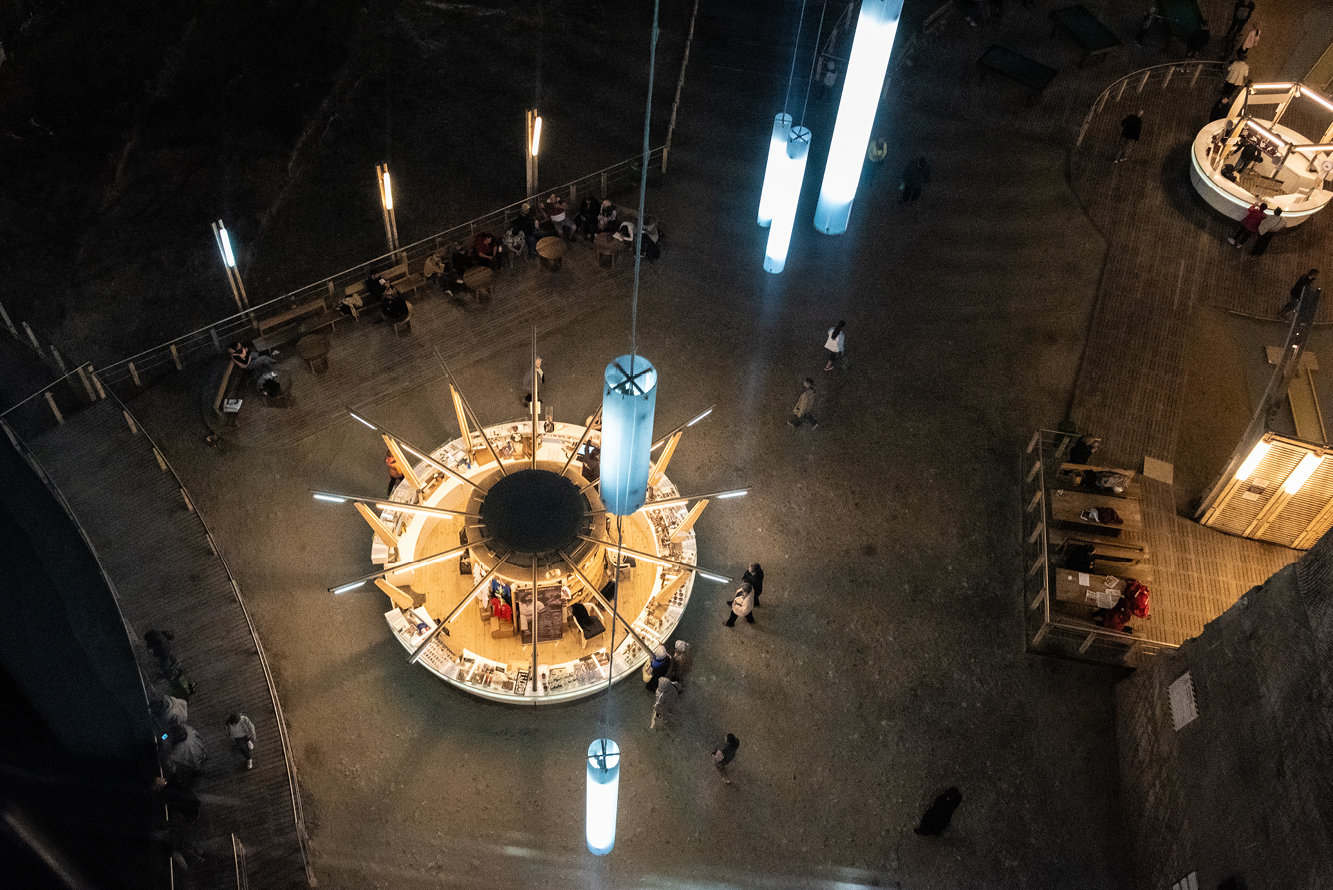
It’s the World’s Largest Salt Mine
On the second travel day, we stood at the entrance building to Salina Turda. “Salina” means salt mine, and it’s in the small town of Turda, a half-hour’s drive from the vibrant, attractive university town of Cluj-Napoka in northwestern Transylvania. Salina Turda is the world’s largest salt mine. Business Insider magazine named Turda Salt Mine one of the 25 hidden global gems several years ago.
Although the Romans developed a small mining operation two millennia ago, historical records reveal that the mine’s major development and excavation began in the mid-11th century. Throughout its 900-year operation, miners used various hand tools to extract the substance; they were paid in “florins (gold and silver coins), ale, and loaves of bread.” Salina Turda produced table salt, as well as salt for other uses, until it permanently closed in 1932. The mine sheltered residents from World War II bombings; later it served as a cheese storage facility.
Finally, the mine found a new purpose for its existence. A group of Romanian architects designed a museum to highlight its history of operations and also incorporated several recreational activities. Opening its doors to visitors in 1992, Salina Turda enjoyed immediate acclaim. A major modernization and expansion completed in 2010 garnered rave reviews. Attendance surged, elevating Salina Turda to one of the country’s premier attractions, with over 600,000 tourists and locals visiting annually.
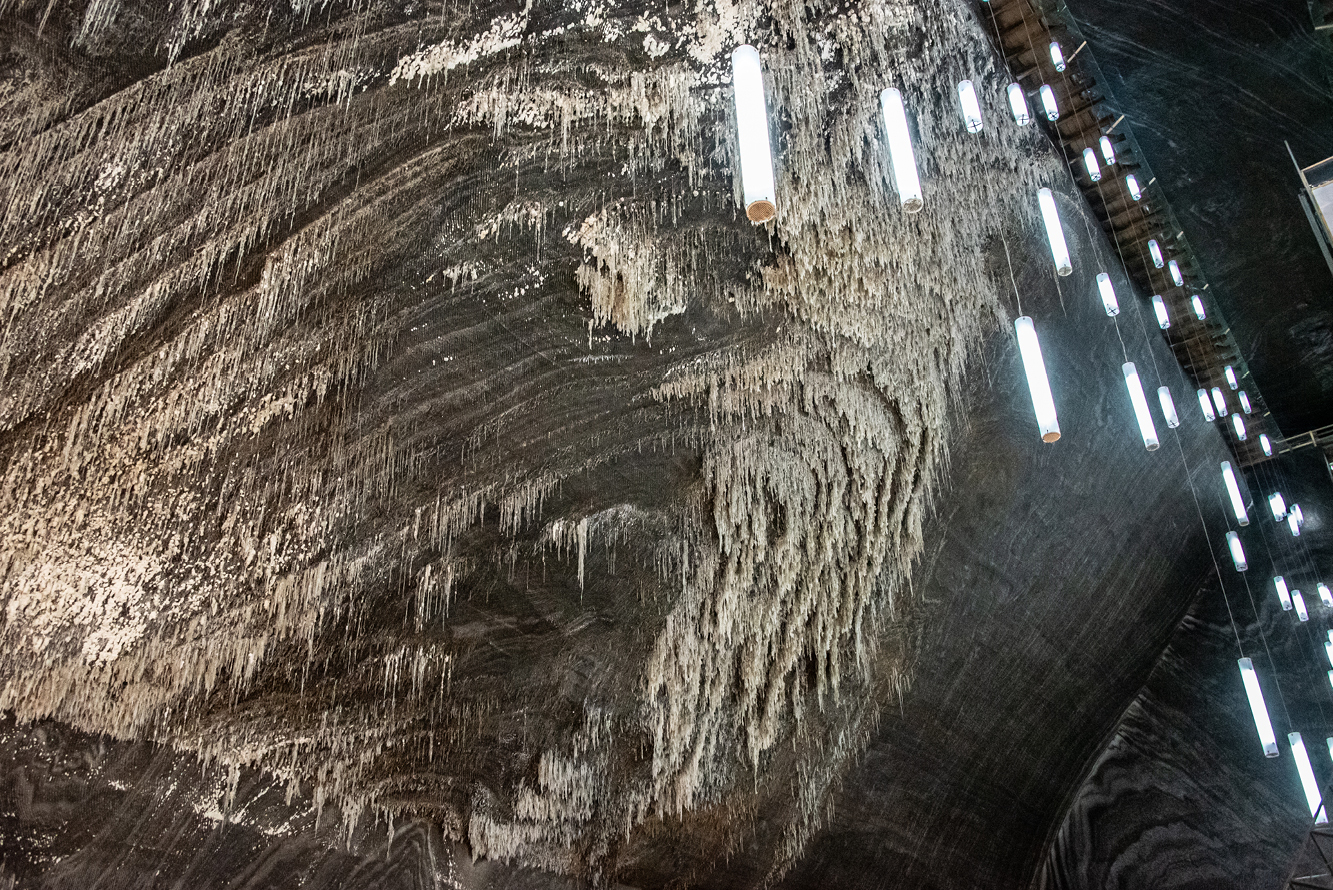
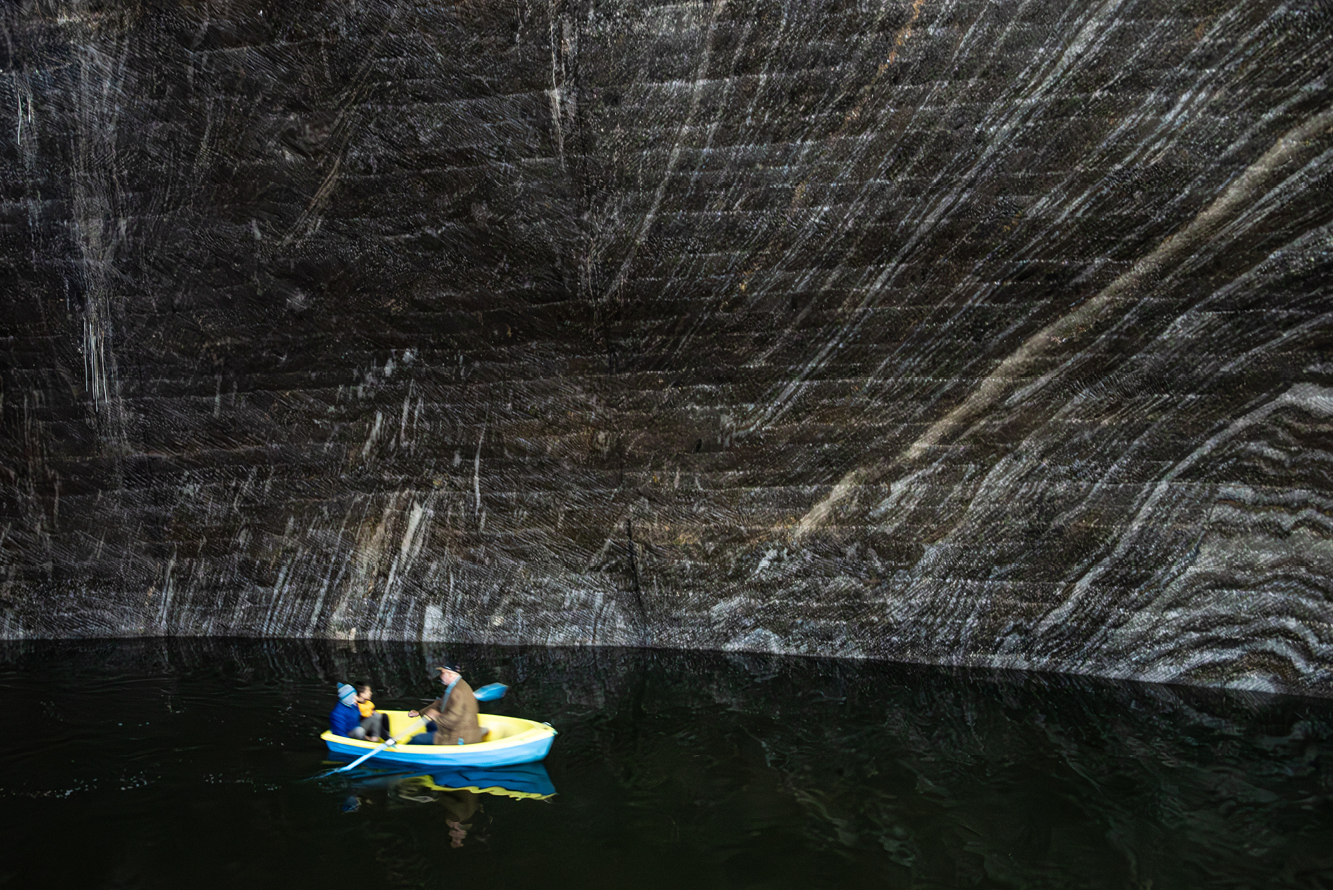
It’s an Art Installation; It’s an Amusement Park
With Nic in the lead, we enter the ground level reception area and ticket booth housed in a structure that resembles a giant piece of shiny industrial equipment. Immediately, I feel the cooler temperature; the mine is kept at a constant 50°-52° (11°-13°C). The air feels humid, yet clean and cool, easy to breathe. Suspended salt particles invisibly fill the atmosphere. For adherents to the alternative medical practice called speleotherapy, the salt aerosol’s qualities benefit breathing and other lung ailments; these spa treatments are available at the mine.
A long dimly lit tunnel leads us past excavation equipment on display. Rail cars mounted on tracks hold large translucent chunks of salt that glow from a light placed underneath them. Shades of gray salt layers line the walls. I touch it, and it’s slippery with condensation. At the tunnel’s end, we descend a long set of stairs that terminates at a glass-enclosed elevator and a breath-taking overlook that provides a spectacular view into the Terezia Mine.
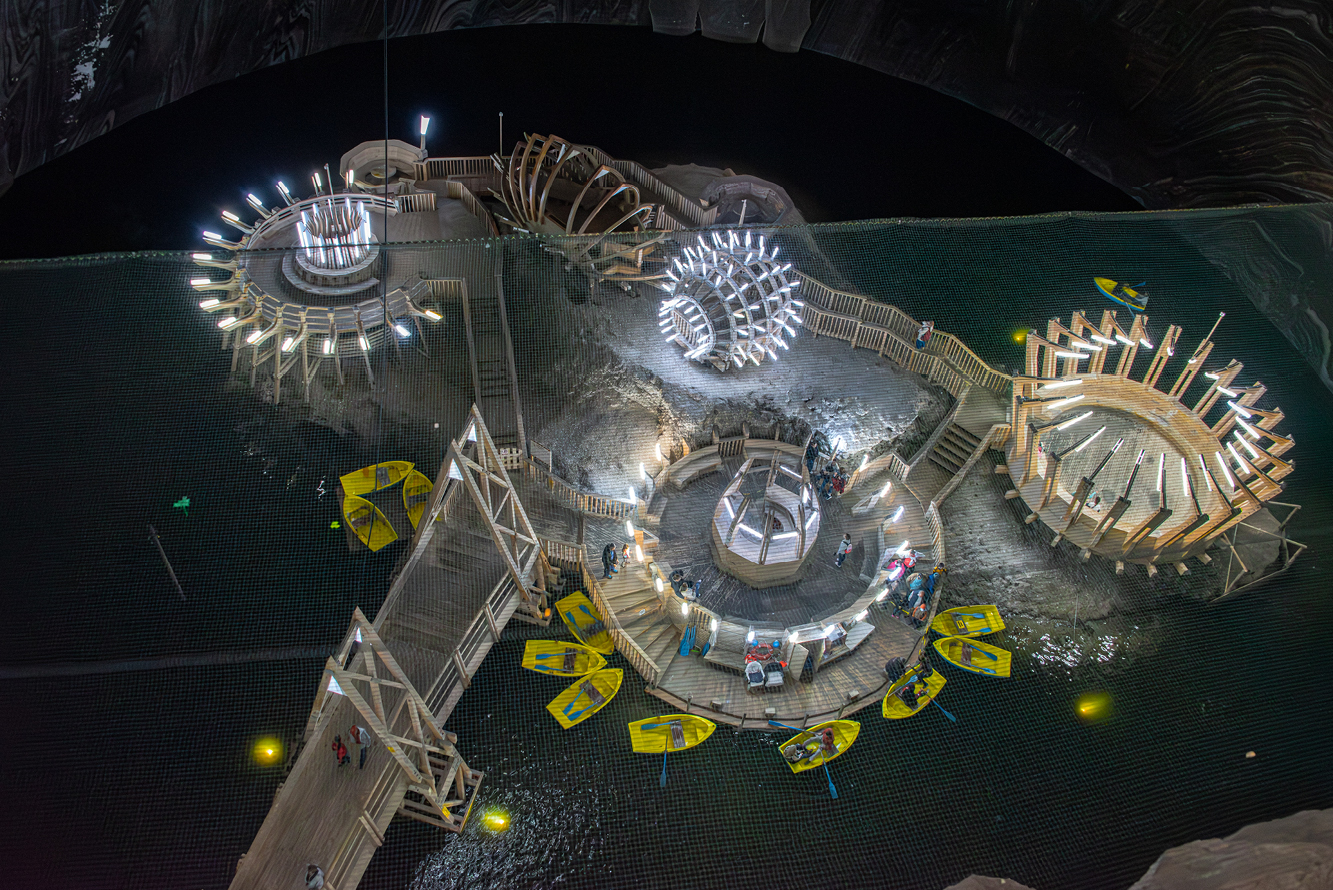
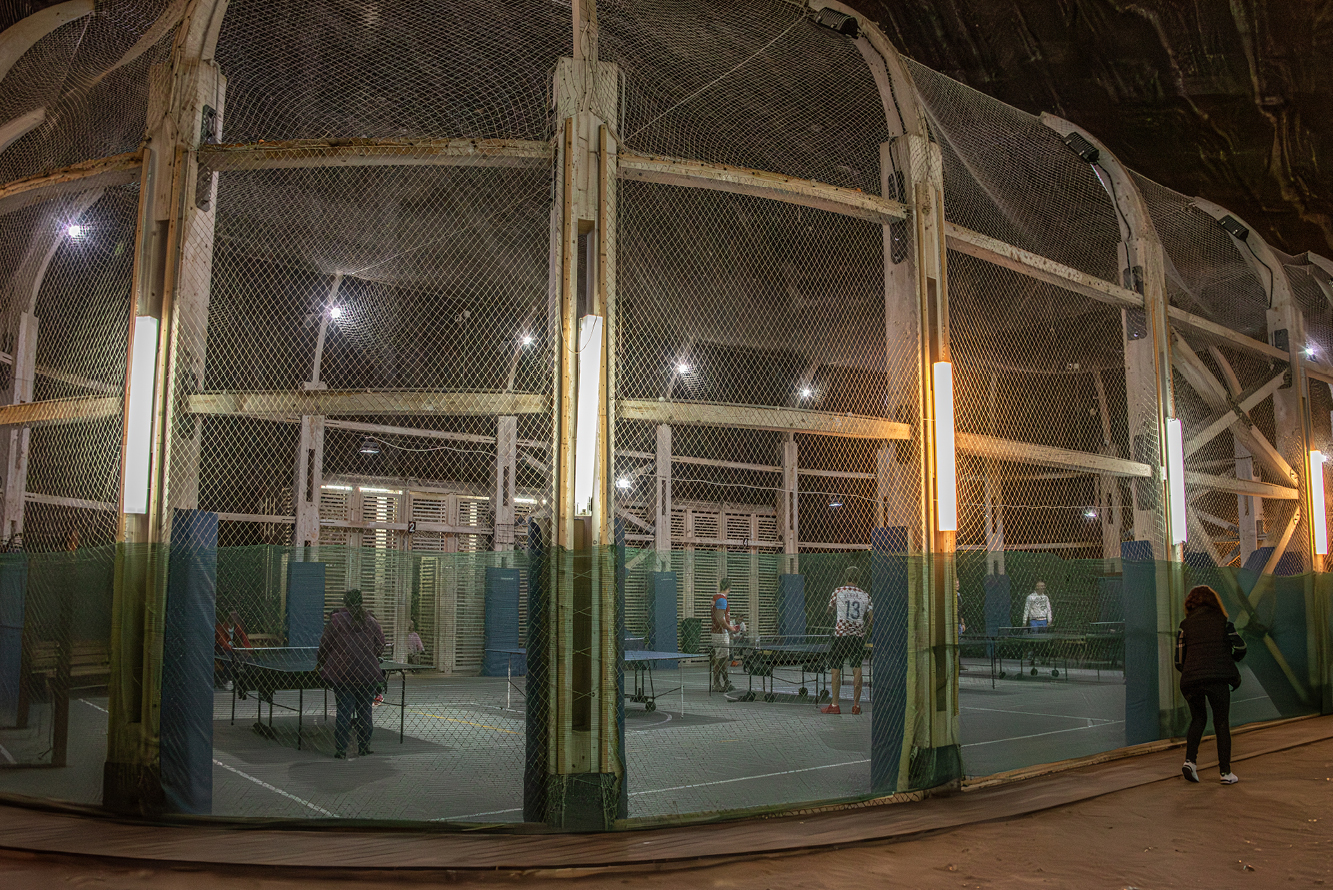
A few hundred feet below a constellation of suspended lights, a small black lake reflects nearby lights. Yellow rowboats are docked at an island in the middle of the lake that supports circular structures artfully lit like giant pinwheels. Couples paddle around the inky water. Striations of white, gray, and black salt layers form swirling abstractions on the caverns’ moist walls.
Halfway down, the elevator clears the ceiling of the adjacent cavernous Rudolf Mine, and its contents come into view. The scene is like a science fiction movie set. Chandeliers of dazzling lights illuminate what appear to be huge cages and giant mechanical structures that remind me of fantastical things I built with my erector set as a youngster. Once out of the elevator, my body does a 360° swivel to get my bearings in this immense space and understand all that’s going on.
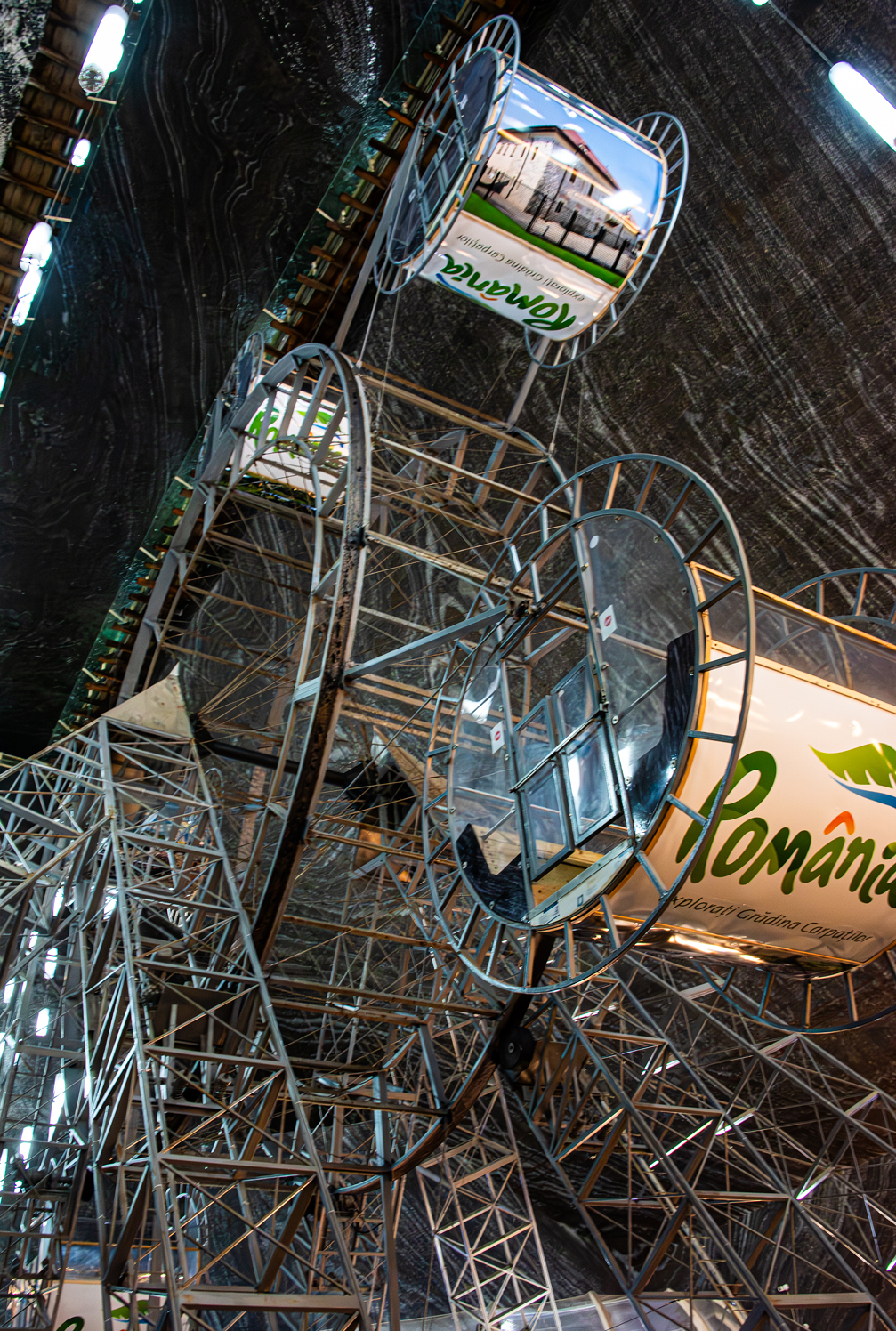
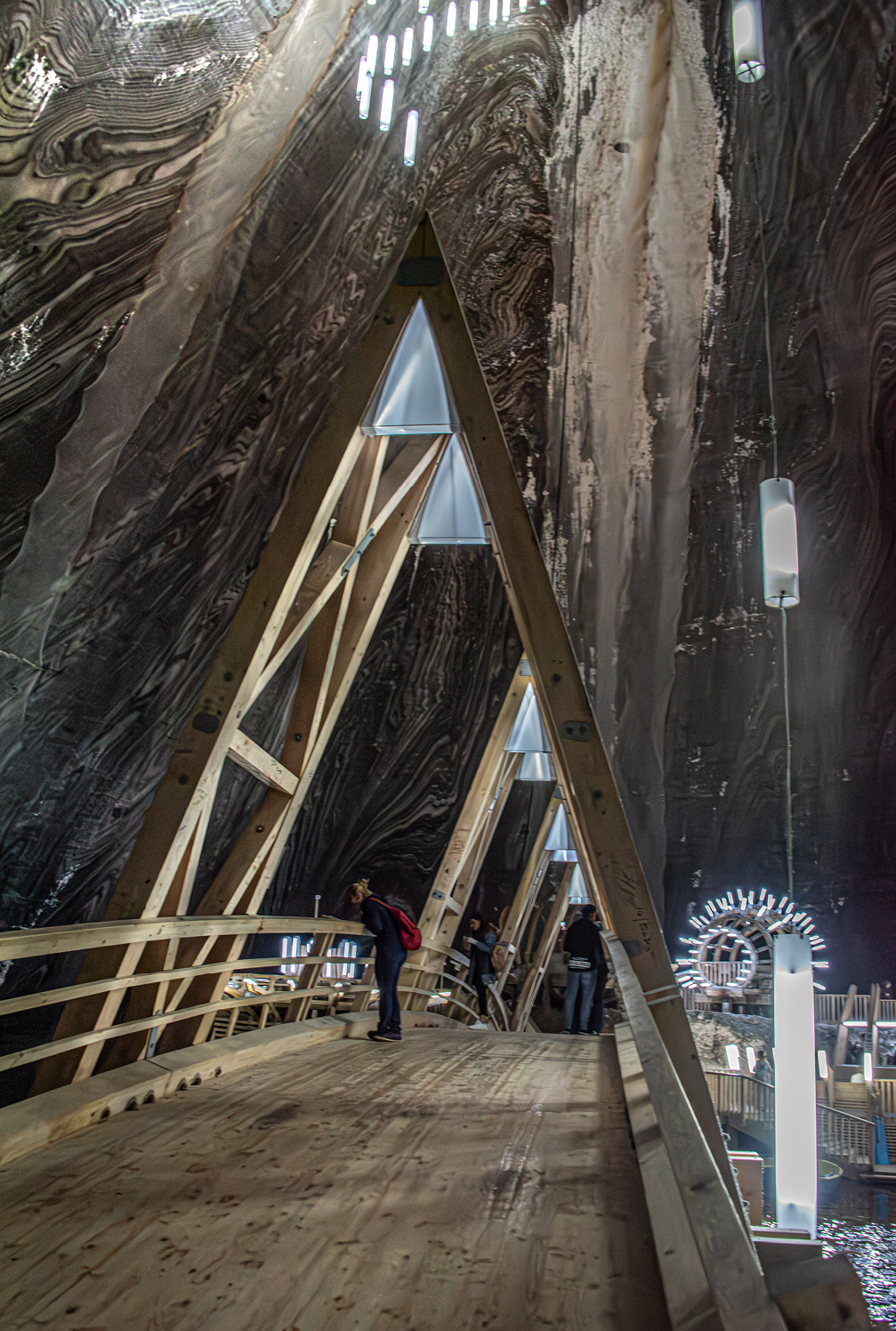
Passing the snack bar, I wander over to a Ferris Wheel with a long queue of visitors, soon to be lifted into the void. Here are the meshed wire cages containing couples playing badminton and table tennis. The cages keep ping pongs and shuttlecocks from flying out to the floor’s edges, which seem to drop off into blackness. We grab an empty table and briefly bat the ping pong back and forth, quitting after too many clumsy mistakes.
The crack of a cue ball splitting apart a billiard table’s 15-ball setup grabs my attention, as players at four tables line up their cue sticks for the next shots. Beyond, the rumble of heavy rolling balls and clatter of pins knocked asunder identify nearby bowling alleys.
Back at the lake, an arched pedestrian bridge with triangular trusses mostly made of wood to resist salt corrosion connects the main floor to the lake’s island. Miners piled inferior quality salt there during its operation days. Now the island is covered by a platform with seating areas, fanciful industrial-like structures, and a dock. Salina Turda’s lake and the Dead Sea between Israel and Jordan have the same dense salinity. (From our Dead Sea visit in 2023, I can guarantee you don’t want to taste it just to find out, like I foolishly did. A wretched taste, it won’t leave you for a while.)
Guests can board one of the boats tied to the dock to paddle around the lake. It’s an attractive amenity, though I’m not sure why anyone would want to do it. Instead, I relax on a park bench to marvel at the unfolding surreal scene.
Our schedule cuts the visit short at 90 minutes, though we could easily have enjoyed another hour in the park. We ascend the elevator, which runs on the original track of the mine, to the earth’s surface and head to Cluj-Napoka for a two-day visit.
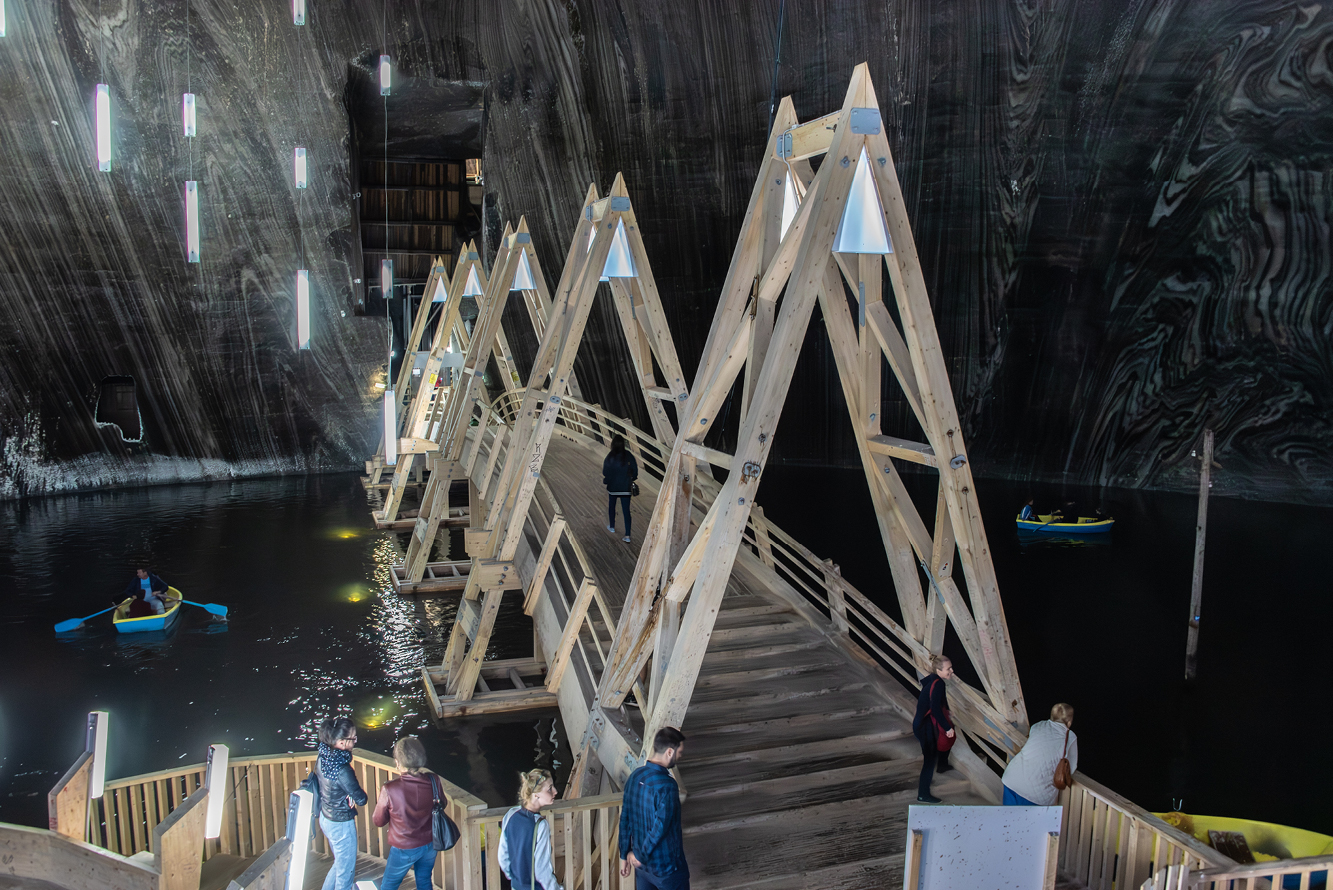
Plan a Trip to Romania and the Balkans
Our fascinating Salina Turda stop was just one of several surprising and engaging experiences in Romania. A holiday to this part of southeastern Europe should include this land of castles and vampires. We spent four weeks on the Balkan Peninsula–– in addition to Romania and Bulgaria for two weeks on a guided tour, we rented a car in Zagreb and devoted a week each in Croatia and Bosnia & Herzegovina. Looking back on our scrapbook of travel memories, a month in the Balkans ranks as one of the best.
If You Go (Prices as of July, 2024)
Getting There:
From Major U.S. Airports to Bucharest or to Cluj-Napoka: All flights make one stop in Europe, usually London, Paris, or Frankfurt
From Bucharest to Cluj-Napoka:
By Air –– 50 minutes, from $142
Combination train/bus–– 6 hrs, 56 mins, $38
By car–– 5 hrs, 29 mins, 256 miles (412 kms)
From Cluj-Napoka to Salina Turda:
By bus –– 58 mins, $22
By taxi –– 29 mins, $27
By car –– 19 miles (31 kms)
Admission to Salina Turda: $5.49 (25 Romanian lei)
Travel Agent: Compass Travel Romania—Andrei Nicolau, Managing Partner • www.tours-of-romania.com • Telephone: +40-722-576456

